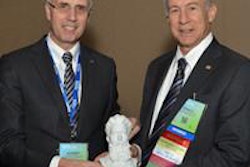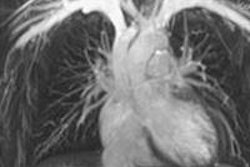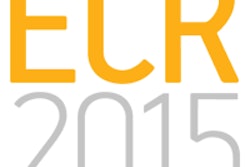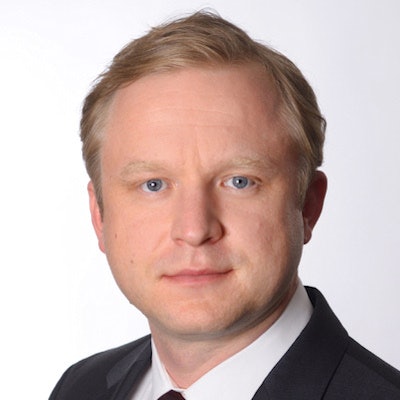
In this interview, Dr. Fabian Bamberg, principal investigator of the MRI arm of the NAKO (Nationale Kohorte) Health Study, provides an update on the project and gives insight into the workings and procedures of this major long-term population study and what it means for radiology.
DRG: In a single sentence -- if possible -- what is the NAKO Health Study (in short, NAKO)?
Bamberg: NAKO is the largest population-based prospective cohort study in Germany. Scientists are hoping it will provide insights into the distribution of diseases and risk clusters, and that it will help with early detection, particularly with regard to imaging.
NAKO was launched three years ago. What has been happening since then and where do we stand today?
An impressive amount of work has been done. Not only have we set up 18 study centers and recruited over 100,000 participants into the full study, but also we have managed to set up five MRI scanning centers, where 3-tesla systems have been used to scan over 12,000 participants. In addition, all processes have been set up to encompass workflow, data management, and quality assurance, as well as the handling of incidental MRI findings. At the moment, we are optimizing the scientific value of MRI data and public access to evaluation projects.
Imaging is an important part of NAKO. What does this mean for NAKO and radiology?
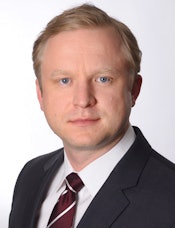 Dr. Fabian Bamberg.
Dr. Fabian Bamberg.Speaking as a radiologist, I get the impression NAKO can teach us a great deal and that we can use this knowledge to develop standards in this area that will shape our clinical activity in the future.
Obviously, comprehensive MRI-based phenotyping is of paramount importance, representing an almost unlimited source of information that will help us gain a better understanding of disease processes and risk clusters, or define new ones -- this is highly scientifically relevant. Some of the key features here are links with concurrent clinical investigations, detailed interviews, and follow-up of all participants, which is already taking place.
It is easy to see how this could lead to new indications, particularly in a preventive setting. Furthermore, models are being set up for standardized acquisitions with minor internal variability, automated workflows, and quality assurance, as well as for our radiological reporting. I think to us radiologists this is going to become increasingly relevant.
Which diseases in particular is MRI scanning meant to be focusing on as it deals with 30,000 study participants? What can we hope to find out from this?
The structure of the MRI scanning protocol that we have set up is fairly comprehensive and wide-ranging. Not only does it cover neurodegenerative, cardio-metabolic, and thoraco-abdominal diseases, but also musculoskeletal system diseases. Our primary target has always been a better understanding of major widespread diseases.
Findings will cover a fairly wide area because, for the first time, we will also be learning about the extent of subclinical diseases, giving us a far greater understanding of disease processes. Furthermore, these findings are not restricted to clinically evident diseases, as they will also give us an insight into the complex mechanisms surrounding disease onset as a morphological correlate of genetic, environmental, or lifestyle-related disposition.
As with any NAKO-related investigation, it is emphasised that MRI scanning is for "purely scientific purposes." But what do you do if you come across clear evidence of disease?
Our approach is the result of wide-ranging discussions, involving not only a number of medical specialties, but also regarding ethics and healthcare economics. All examinations are radiologically assessed by specialists and, subject to strict rules, details of abnormal findings are passed on to participants. Here, it is important to mention, firstly, that we only notify people if findings are absolutely unambiguous and, secondly, that we also have a special core unit at Heidelberg University that makes recommendations as to how to proceed if findings are unclear and also consults with a multidisciplinary committee.
In total, not only will MRI data be generated from 30,000 study participants, but also somewhere in the region of 28 million biological specimens are being collected and stored. How do you address the issue of data protection in dealing with all this material?
NAKO is, in fact, extremely valuable for the definition and implementation of study procedures. Naturally, this will have an effect on imaging and associated radiomics applications. Data security is a high priority within NAKO. In this context, I would like to refer everybody to the comprehensive concept of data protection. Detailed information on this subject can be found on the homepage of the official website.
How is NAKO data evaluated scientifically? Can radiologists take part?
Basically, access to data collected under the auspices of NAKO, including imaging data, is free to the scientific community. This is how it is embedded within the terms of use issued by the Verein Nationale Kohorte (National Cohort Association), and there is already the option of applying for data relating to a specific, very limited range of issues. Over the course of the year, we will also be issuing official invitations to take part in the evaluation.
Editor's note: This is an edited version of a translation of an article published in German online by the German Radiological Society (DRG, Deutsche Röntgengesellschaft). Translation by Syntacta Translation & Interpreting. To read the original article, click here.




